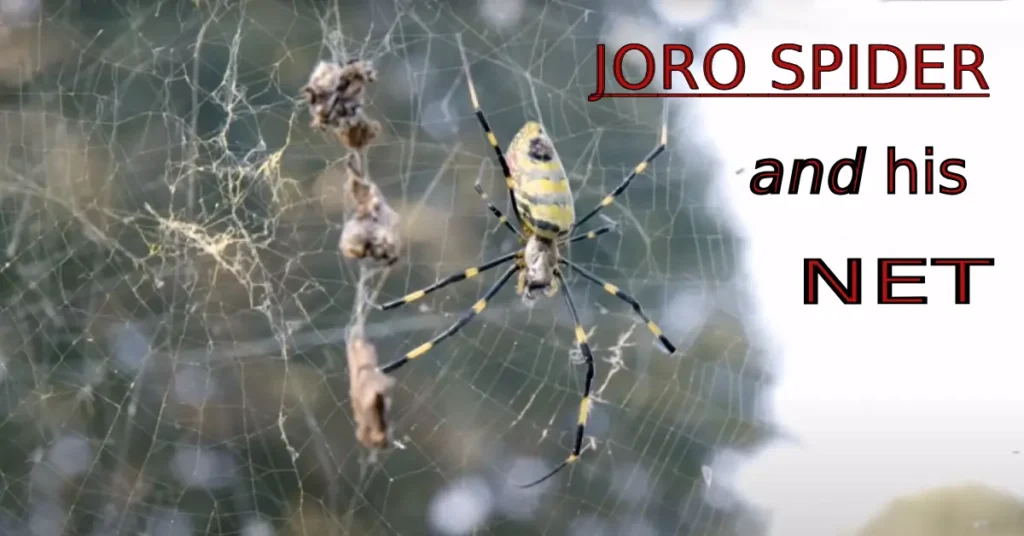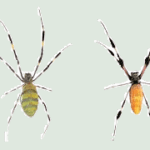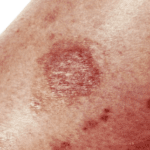The Joro Spider
Have you ever spotted a colorful spider in your garden and wondered if it was dangerous? Meet the Joro spider. As its presence grows in various regions, it’s essential to understand more about these fascinating yet often misunderstood creatures. From their Joro Spider bite symptoms to their impressive size, this article dives deep into the world of the Joro spider.
What is a Joro Spider?
The Joro spider, scientifically known as Trichonephila clavata, is a member of the golden orb-weaver family. Originally from East Asia, particularly Japan, Korea, and China, these spiders have recently made headlines due to their expanding presence in the southeastern United States.
- Scientific Name: Trichonephila clavata
- Family: Golden Orb-Weaver
- Origin: East Asia (Japan, Korea, China)
- Recent Spotlight: Rapidly spreading across the southeastern United States.
- Physical Characteristics: Large size, distinctive yellow and black markings.
- Web Building: Creates large, golden orb-shaped webs.
- Impact: Potential ecological and economic effects are still under study.
Joro Spider Size
Joro spiders are notably large (giant venomous Joro spiders) compared to many other spiders. Females, in particular, can reach sizes that make even the most seasoned arachnophobes uneasy.
General Size Range
The typical size range for Joro spiders is between 0.7 and 1 inch (1.8 and 2.5 cm) for males and up to 3 inches (7.6 cm) for females, including their leg span. This makes them significantly larger than many common garden spiders.
Joro Spider Dangerous:
Dr. David Coyle, an entomologist at Clemson University, told NorthJersey.com earlier this year that there have been no reports of Joro spiders biting humans.
- Rare Bites: Dr. David Coyle, an entomologist, says Joro spiders rarely, if ever, bite humans.
- Weak Fangs: Their fangs are designed for insects, not strong enough to pierce human skin.
- Harmless to Humans: Both Dr. Coyle and WebMD agree that that Joro spiders pose no threat to people.
- Avoidance: Joro spiders prefer to avoid humans altogether.
Joro Spider Bite:
Joro spiders pose little threat to humans. Bites are rare and symptoms are mild. No allergic reactions have been reported. Most bites don’t require medical treatment. Joro spiders are spreading across the southeastern US. Be prepared, but don’t fear.
- Rare Bites: Joro spiders rarely bite humans.
- Mild Symptoms: When bites do occur, symptoms are typically minor, such as redness and itching.
- No Allergic Reactions: No allergic reactions were reported to Joro spider venom.
- Medical Intervention Unnecessary: Most cases do not require medical treatment.
- Similar to Other Spider Bites: Joro spider bites are comparable to common spider bites.
- Not Life-Threatening: Bites are generally not dangerous.
- Southeastern Spread: Joro spiders have been observed in states like Georgia, South Carolina, North Carolina, Tennessee, West Virginia, Oklahoma, Alabama, and Maryland.
- Potential for New Jersey Invasion: Be prepared for their presence in New Jersey.
- No Need for Excessive Fear: Joro spiders are not harmful to humans.
Table About the Joro Spider for a Better Understanding.
| Topic | Details |
|---|---|
| Scientific Name | Trichonephila clavata |
| Family | Araneidae |
| Common Name | Joro spider |
| Web Characteristics | Immense golden webs spanning over 3 feet (1 meter), typically 3 to 9 feet (1 to 3 meters) above ground |
| Identification | |
| – Adult Female | Blue-black and yellow stripes on back and legs, red markings on the underside |
| – Body Size (Female) | Body up to 1 inch long, leg span up to 4 inches (size of a human palm) |
| – Special Features (Female) | Cylindrical abdomen, round cephalothorax, tufts of golden hair on legs |
| – Immature Female | Brown head, narrower abdomen, blotchy black and yellow pattern |
| – Adult Male | Smaller, drab brown bodies with darker stripes, body length up to 0.3 inches |
| – Special Features (Male) | Blue-black and yellow stripes on the back and legs, red markings on the underside |
| Movement | Males travel by “ballooning” using silk strands to catch electrical currents or wind |
| Diet | Insects such as grasshoppers and moths, caught in webs and weakened with venomous bite |
| Japanese Name | jorō-gumo (entangling or binding bride) |
- Joro spider has banana-like coloration: black with thick yellow markings.
- Grows to about the size of an adult’s palm.
- Similar to banana spiders but has distinctive red markings on its underbelly.
- Part of the orb-weaving spider group.
- Building Web: intricate webs to catch prey.
- Produces golden-colored webs.
- Webs are higher off the ground than those of other spiders.
Comparison with Other Spiders
When compared to other spiders, Joro spiders are larger than the average garden spider (Araneus diadematus), which usually grows up to 0.9 inches (2.2 cm).
How Big Are Joro Spiders?
Female vs. Male Size | Giant venomous Joro spiders
Females are much larger than males, which is a common trait among many spider species. While males are relatively small and less vibrant, females showcase striking colors and substantial size.
| Gender | Size (Body Length) | Size (Including Leg Span) |
|---|---|---|
| Female | 0.7 to 1 inch (1.8 to 2.5 cm) | Up to 3 inches (7.6 cm) |
| Male | Around 0.3 to 0.4 inches (0.8 to 1 cm) | Up to 1 inch (2.5 cm) |

Size in Relation to Habitat
Their large size aids in their survival, allowing them to construct expansive webs to capture prey effectively. The size advantage also helps them deter potential predators.
Joro Spider Appearance
Color and Markings
Joro spiders are easily identifiable by their bright yellow, blue, and red markings. Females, especially, have vibrant color patterns that make them stand out.
- Distinctive Markings: Bright yellow, blue, and red colors.
- Gender Differences: Females exhibit more vibrant color patterns.
- High Visibility: Striking appearance makes them easily noticeable.
Distinguishing Features
Aside from their size and coloration, Joro spiders have long, slender legs with distinct bands. Their web structures are also noteworthy, often spanning several feet in diameter.
Joro Spider Bite Symptoms
Initial Symptoms
Most Joro spider bites result in mild symptoms similar to a bee sting: slight redness, swelling, and minor pain at the bite site. These symptoms usually subside within a few hours after the bite.
| Symptom | Description |
|---|---|
| Redness | Mild to moderate redness around the bite area. |
| Swelling | Localized swelling at the bite site, similar to a bee sting. |
| Pain | It is uncommon, but some individuals may experience muscle cramps or spasms. |
| Itching | Itching around the bite area, which may persist for a few hours. |
| Blistering | In rare cases, small blisters may form around the bite site. |
| Muscle Cramps | Uncommon, but some individuals may experience muscle cramps or spasms. |
| Fever | Rarely, a low-grade fever may develop, especially if there is an allergic reaction. |
| Allergic Reaction | Severe allergic reactions can include difficulty breathing, intense swelling, and widespread rash. Seek immediate medical attention if these occur. |
Severe Reactions
In rare cases, some individuals might experience more severe reactions such as blistering, muscle cramps, or fever. However, these instances are uncommon and often result from an allergic reaction.
- Mild Symptoms: Most people experience only minor discomfort, similar to a bee sting.
- Severe Reactions: In rare cases, more severe symptoms like blistering, muscle cramps, or fever can occur.
- Allergic Response: These severe reactions are typically attributed to an allergic response to the spider’s venom.
- Uncommon Occurrence: It’s important to note that such severe reactions are infrequent.
What to Do If Bitten by a Joro Spider
Immediate First Aid Steps
- Clean the Bite Area: Use soap and water to clean the bite.
- Apply Ice: Reduce swelling and pain by applying an ice pack to the bite area.
- Use Antihistamines: Over-the-counter antihistamines can help reduce itching and swelling.
When to Seek Medical Attention
If you experience severe symptoms or an allergic reaction, seek medical help immediately. Do not scratch the itching area as scratching can increase skin damage. Symptoms such as difficulty breathing, severe swelling, or intense pain should not be ignored.
Joro Spider Venom
Composition of the Venom
Joro spider venom contains neurotoxins that affect their prey, primarily insects. These neurotoxins immobilize their prey, making it easier for the spider to consume them.
- Neurotoxin Presence: Joro spider venom contains neurotoxins.
- Target: Primarily affects insects, their primary prey.
- Immobilization: Neurotoxins paralyze or immobilize prey.
- Hunting Strategy: This paralysis makes it easier for the spider to consume its catch.
Effects on Humans and Animals
While their venom is potent for small prey, it poses minimal risk to humans and larger animals. The primary effect on humans is localized pain and swelling, similar to other spider bites.
Are Joro Spiders Dangerous?
Risk Assessment
Overall, Joro spiders are not considered dangerous to humans. They are generally non-aggressive and only bite if they are provoked or if you accidentally disturb their area.
Precautions and Safety Tips
To avoid bites, exercise caution when gardening or moving through areas where these spiders are known to inhabit. Wearing gloves and being mindful of their webs can help prevent unwanted encounters.
Guide To Treatment After Bite:
- Clean the Bite Area: Wash the bite with soap and water to prevent infection.
- Apply Ice: Use an ice pack to reduce swelling and numb the pain.
- Use Antihistamines: Take over-the-counter antihistamines to alleviate itching and swelling.
- Pain Relief: Take pain relievers like ibuprofen or acetaminophen if needed.
- Monitor Symptoms: Keep an eye on the bite for signs of severe reaction.
- Seek Medical Attention: If symptoms worsen or you experience severe reactions, consult a doctor immediately.
More read, for diseases and Prevention at https://healthmozo.com.
Joro Spider vs. Garden Spider
Physical Differences
Joro spiders are typically larger and more vibrantly colored than garden spiders. Garden spiders often have a more muted color palette with patterns that blend into their surroundings.
Behavioral Differences
Joro spiders tend to build larger and more intricate webs compared to garden spiders. Their behavior is also more passive, preferring to stay in their webs rather than roaming around.
Habitat Preferences
While both spiders can be found in gardens, Joro spiders favor wooded areas with ample space to construct their large webs. Garden spiders are more adaptable to various environments, including urban areas.
- Joro Spiders:
- Prefer wooded areas with plenty of space for their large webs.
- Often found in trees, shrubs, and other vegetation in natural settings,.
- Garden Spiders:
- More adaptable to different environments.
- Can be found in gardens, parks, and even urban areas.
- Thrive in various habitats, including grassy areas and flowerbeds.
Garden Spider Overview
Common Species
Common garden spiders include the European garden spider (Araneus diadematus) and the yellow garden spider (Argiope aurantia).
Typical Behavior
Garden spiders are known for their spiral webs and are generally harmless to humans. In the garden, they play an important role in controlling pest populations.
Can Joro Spiders and Garden Spiders Coexist?
Ecological Impact
The introduction of Joro spiders into new environments can have mixed impacts. They can compete with native species for resources but also help control pest populations.
Interactions Between Species
While direct interactions between Joro spiders and garden spiders are rare, competition for food and space can affect their coexistence.
Myths and Facts About Joro Spiders
Common Misconceptions
- Myth: Joro spiders are highly venomous to humans.
- Fact: Their venom is not harmful to humans beyond mild irritation.
- Myth: They aggressively chase and bite people.
- Fact: Joro spiders are non-aggressive and only bite in self-defense.
Verified Facts
- Joro spiders are expanding their range due to climate adaptability.
- They contribute positively to controlling insect populations in their habitats.
How to Manage Joro Spiders in Your Area
Prevention Tips
- Reduce Clutter: Keep your garden and outdoor areas free of debris where spiders can hide.
- Seal Entry Points: Ensure doors and windows are well-sealed to prevent spiders from entering your home.
Safe Removal Methods
- Relocation: Use a jar and a piece of paper to capture and relocate spiders outside.
- Professional Pest Control: For larger infestations, consider hiring pest control services.
Conclusion
Understanding Joro spiders helps demystify these fascinating creatures. While their appearance might be intimidating, they pose little threat to humans and play an essential role in controlling insect populations. By learning about their habits, venom, and the symptoms of their bites, we can coexist peacefully with these remarkable spiders.
FAQs
Are Joro spiders aggressive?

No, Joro spiders are generally non-aggressive and will only bite in self-defense.
Can Joro spider venom kill a human?

No, Joro spider venom is not lethal to humans. It typically causes mild symptoms similar to a bee sting.
How can I identify a Joro spider?

Joro spiders are identifiable by their large size, bright yellow, blue, and red markings, and the distinct banding on their legs.

